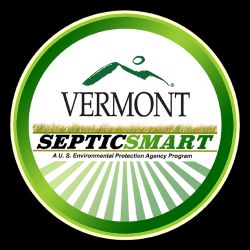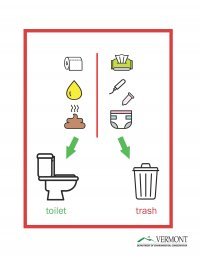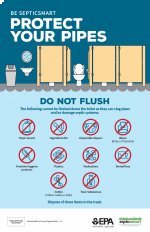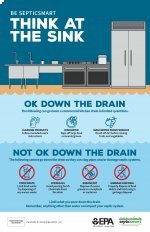Regional Offices Map
 |
 |
|
Homeowners Guide to Onsite Wastewater Systems |
Guide to Failed Wastewater Systems |
Drinking Water and Wastewater Permitting for Food and Lodging FAQs |
|
Well Owners General Information
|
Innovative and Alternative Wastewater Technology | Permit Search | Compliance FAQs | Certified Labs for Water Quality Testing |
The Regional Office Program issues water/wastewater permits (WW Permits) for soil based wastewater systems with flows of less than 6500 gallons per day, for potable water supplies (water supplies that are not public water supplies), and for municipal water and sewer connections. Permitting staff are located in five Regional Offices. Staff also administers the licensed designer program and reviews innovative and alternative systems for potential use in VT.
 |
How do I find my Wastewater System or Well Permit? |
The regional offices map provides office, program and contact information for each region.
Licensed Designer Program information.
This is a simplified overview of how a wastewater system works.

Water runs out of your house from one main drainage pipe into a septic tank.
The septic tank is a buried, water-tight container usually made of concrete, fiberglass or polyethylene. Its job is to hold the wastewater long enough to allow solids to settle down to the bottom (forming sludge), while the oil and grease floats to the top (as scum). Compartments and a T-shaped outlet prevent the sludge and scum from leaving the tank and traveling into the drainfield area.
The liquid wastewater then exits the tank into the drainfield. If the drainfield is overloaded with too much liquid, it will flood, causing sewage to flow to the ground surface or create backups in toilets and sinks.
Finally, the wastewater percolates into the soil, naturally removing harmful bacteria, viruses and nutrients.
 Do Your Part, Be Septic Smart! SepticSmart Week is an annual event that focuses on educating homeowners and communities on the proper care and maintenance of their wastewater systems, as well as protecting public health, the environment and one's property value. Learn more by visiting www.epa.gov/septic
Do Your Part, Be Septic Smart! SepticSmart Week is an annual event that focuses on educating homeowners and communities on the proper care and maintenance of their wastewater systems, as well as protecting public health, the environment and one's property value. Learn more by visiting www.epa.gov/septic
Flushing Do’s and Don’t Images: Is your wastewater system abused by guests or customers? These images will help educate wastewater system users on what should not go down the toilet. If you own a home, camp or business that is visited by guests that do not understand that wastewater systems are not designed to handle so called ‘flushable’ wipes, paper towels, diapers and personal hygiene products, these signs will convey a clear message on what goes in the toilet and what goes in the trash.



